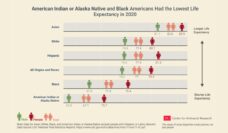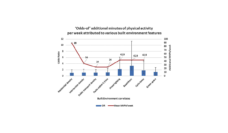George A. Kaplan, professor emeritus of the University of Michigan, once remarked, “Like real estate, health is location, location, location.” Indeed, researchers over the past decades have delved into the pivotal role that neighborhood environments play in shaping our health.
The built environment, encompassing all of the physical parts of where we live and work, plays a crucial role in influencing health behaviors, such as physical activity, diet, and sleep. Factors like walkability, green spaces, healthy food options, and adequate housing conditions are linked to many physical and mental health outcomes, including cardiovascular diseases, obesity, respiratory diseases, and depression. Such associations between built environments and health outcomes suggest that people may not have the same access to healthy environments, a key reason for health disparities in the United States.
Improving built environments can prevent many health problems at a broad population level. In other words, everyone living in a neighborhood with an environment that is conducive to well-being will benefit. For this reason, built environment improvements can improve health equity.
Our neighborhoods are not merely places we inhabit—they are the architects of our health.
My colleagues and I investigated the relative importance of various built environment factors to health outcomes. Drawing on life expectancy data from the CDC’s U.S. Small-Area Life Expectancy Estimates Project, we evaluated walkability, food environments, housing characteristics, and air pollution using 14 specific measures from various public data sources. Notably, we classified most census tracts in the U.S. into four categories based on the level of urbanization (i.e., high-density urban, low-density urban, small town, and rural). We recognized that the influence of built environments in busy metropolitan centers would differ from their impact in serene suburban and rural areas.
We found numerous ways in which characteristics of the built environment intertwine with health. Neighborhood-level housing characteristics were significantly associated with life expectancy across the different urban, suburban, and rural settings. This implies that the quality of housing in our immediate surroundings can profoundly impact our wellbeing, irrespective of whether we reside in a rural area or a high-density urban setting.
Conversely, we found that certain factors, such as access to healthy foods, parks, and green space, exert more influence in specific settings. For example, green space may be particularly important in high-density urban settings, while nearby healthy food options are critical environmental factors in suburban or rural areas.
Our research offers important evidence that community planning and policies need to be tailored based on the spatial context of neighborhoods. A risk factor for health in a metropolitan center may not have the same effect in a suburban area and vice versa. We urge policymakers and urban planners to craft interventions that are attuned to the unique characteristics of each community, rather than taking a one-size-fits-all approach.
Our findings also offer a call to action for communities to shape their own built environments through thoughtful, context-specific planning. Public datasets with local-level data, like the City Health Dashboard, can be useful for such endeavors. After all, our neighborhoods are not merely places we inhabit—they are the architects of our health.
Photo via Getty Images














